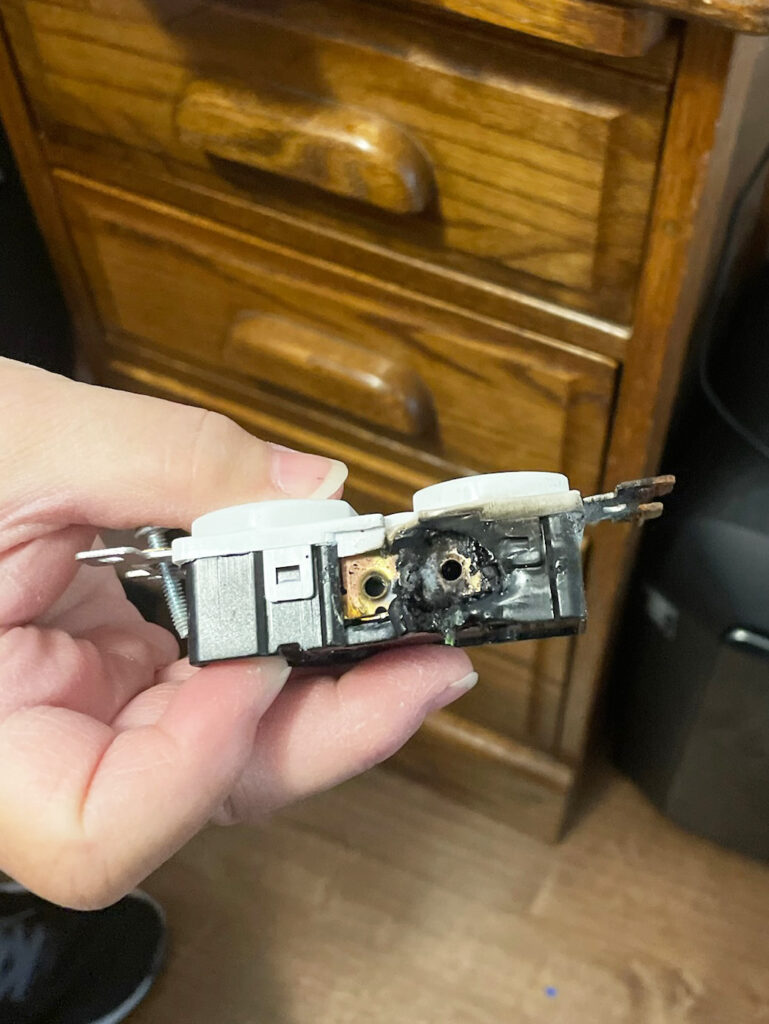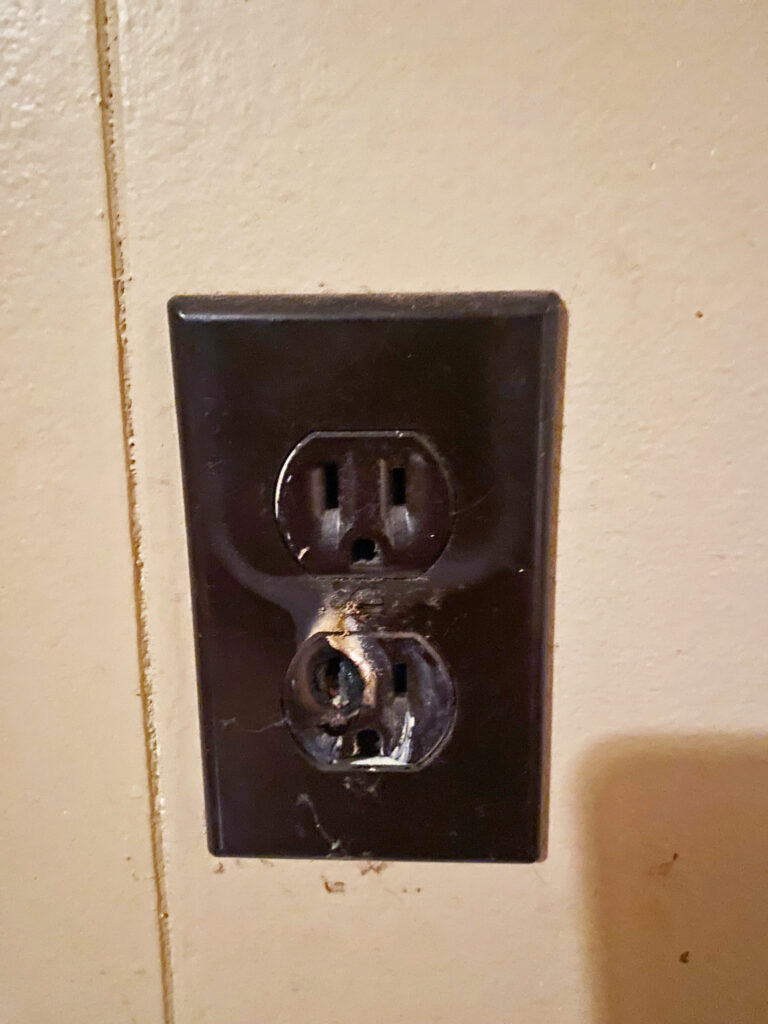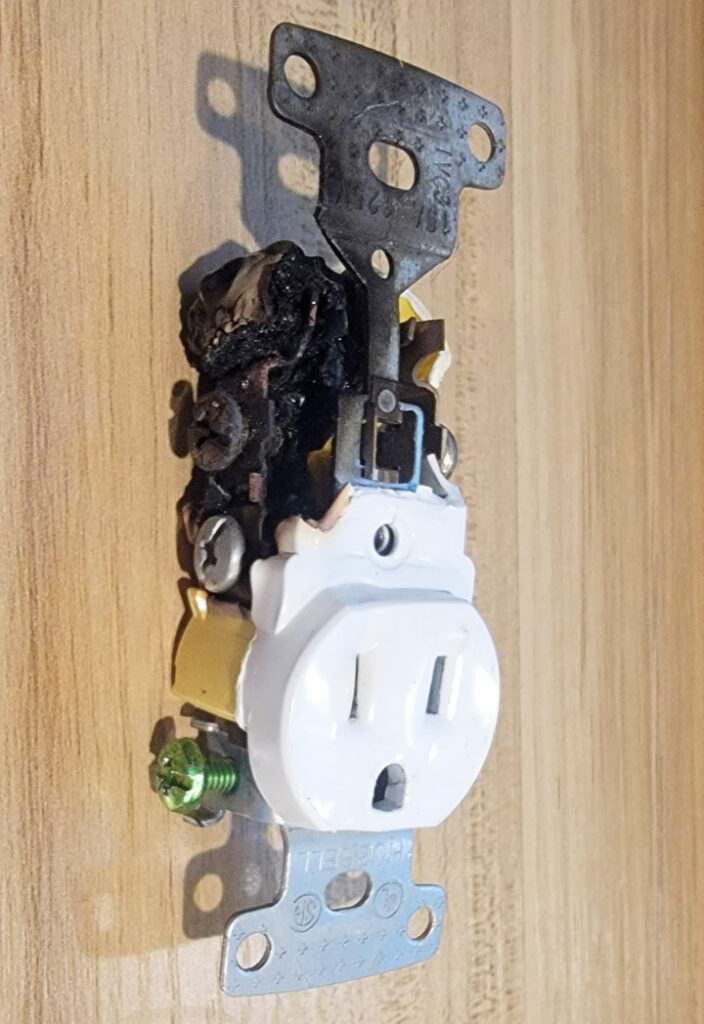With the start of the new year, it’s a good time to refresh the never-ending to-do list for your home. There can be many fun projects to tackle – a fresh coat of paint, a bathroom remodel, fixing those squeaky stairs – but don’t overlook electrical safety.
How often do you think about your home’s electrical outlets? The answer for most of us is ‘not often.’ Yet, outlets serve an integral role in delivering electricity safely from your home’s electrical system to your appliances and devices every day. As the most frequent electrical fire hazard identified by Ting in 2023, it’s important that your outlets are in good working condition and, where needed, upgraded to keep your family & home safe.
How can you tell if any of your electrical outlets need to be replaced? Having Ting monitor your home for developing fire hazards is a good start. But also trust your senses. A quick assessment can help: there are a few signs you can look for that indicate it may be time for an upgrade before a hazardous situation has a chance to develop.
Don’t miss the real customer photos of damaged & dangerous outlets at the end.
We are super passionate about helping to protect our customers. If you have questions, especially if you suspect an electrical risk in your home, please contact us immediately. Ting is statistically proven to prevent ~80% of electrical fires, significantly reducing electrical fire risk in homes. However, Ting alone cannot eliminate 100% of electrical fire risks. Trust your senses. Flickering lights, intermittent lights or devices, frequently tripping breakers, or electrical odors can indicate that an electrical hazard is developing.
Signs, Smells, or Sounds Indicating Damaged Outlets
Damaged outlets are dangerous outlets. The easiest way to find a damaged outlet is by using your senses – but safety first! Please use caution while inspecting what could be a damaged outlet.
Inspect each of the outlets in all your rooms (don’t forget the basement, garage, and outdoors) for:
- Cracked outlet covers
- Discoloration on the outlet cover or wall
- The cover plate feels hot
- Crackling, sizzling, or buzzing sounds
- Burning odors or smoke
If the outlet does not show signs of an immediate danger but is cracked, discolored, or loose – it is time to replace it. Contact a licensed electrician. If, on the other hand, the outlet or the wall around it seems hot, is making noise, or emitting odors, immediately stop using that outlet, turn off the circuit breaker that serves that outlet, and reach out to our Fire Safety Team.
“I had just moved into a new house and after I installed Ting, I received an alert. A member of the Ting Fire Safety Team called me within minutes and explained the hazard they had detected. The hazard turned out to be a poorly-installed receptacle near my hot water heater which was arcing inside. I actually saw the sparking inside the outlet when I moved the plug around myself. I had the receptacle replaced that afternoon and have had nothing anomalous detected since. I credit Ting with helping to detect and isolate a potentially dangerous electrical problem.”
– Michael in Annapolis, MD
Your Outlets Don’t Have 3 Prongs
Older homes sometimes have very old two-prong outlets. They are most commonly found in homes built prior to the 1960s. This typically means they are not grounded and not up to modern safety standards. Also, they are not well-suited to the task of most modern day device needs. Replacing these also likely involves running new wiring, which is a task best suited for a licensed professional.
Your Wet or Damp Location Outlets Aren’t GFCI-Protected
GFCI (Ground Fault Circuit Interrupter) outlets should be considered if not already installed in rooms where water & outlets are in close proximity, such as your kitchen, bathroom, wet bar, or laundry room. GFCI outlets have a “reset” and a “test” button on the outlet’s faceplate and automatically shut off power in ground fault events to prevent electrocution.
Tip: If your wet location outlet does not seem to have test and reset buttons, keep in mind that a normal outlet can be wired “downstream” of a GFCI outlet and benefit from its GFCI protection. Similarly the entire circuit may already be protected by a GFCI circuit breaker in the electrical panel. A licensed electrician can help you make sense of your current situation if you are not sure. This is a great short video from Ask This Old House that explains how GFCIs work.
Plugs Fall Out or Don’t Fit Snug in the Outlet
If plugs fall out easily, sag, or don’t fit snugly, this may be a sign that it’s time to replace the outlet. A loose connection is a bad connection – and can cause sparking and arcing. Replacing outlets that no longer hold plugs securely can prevent an electrical fire in your home.
The outlet itself should be sturdy as well. If it can be wiggled or if it moves when plugging in a device, there’s a high risk of a loose connection forming. Loose connections are always fire hazards.
“I was surprised to get an alert from Ting that I had a problem. The Fire Safety Team was able to identify an outlet that might be the cause of the problem. I turned off the breaker to that outlet to investigate. I found a burnt area on the outlet where arcing was occurring due to a loose connection. I replaced the outlet which took care of the issue. I am so thankful to have Ting that identified a potential fire hazard early on and was able to prevent what might have a catastrophic event.”
– Doug in Lewisburg, WV
Other Electrical Upgrades to Consider for 2024
Did your outlets pass inspection? Check that off the list! While you’re at it, here are a few other home electrical upgrades to consider for 2024:
- Install whole house surge protection to protect your home and your devices and appliances in the event of a power surge, especially if you regularly experience lightning storms or your utility power is unreliable.
- Upgrade your electrical panel if yours is decades old and showing signs of wear to enhance safety and durability.
- Replace old lightbulbs with LEDs to make your lighting safer & more efficient.
- Replace any old smoke alarms and carbon monoxide detectors – the NFPA recommends every 10 years.
- Get a professional electrical inspection by your electrician to suggest necessary safety upgrades.
Customer Photos: Ting-Detected Outlet Fire Hazards









